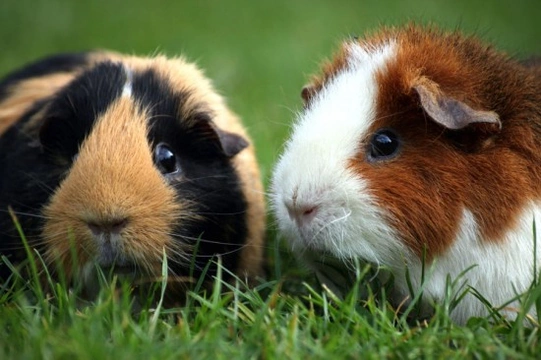
Cuy or Guinea Pig - Living in Parallel Universes!
Perhaps the first thing that strikes about the guinea pig is the name... because guinea pigs bear no relation to pigs whatsoever, not in looks nor in genus. Neither do they come from Guinea. So who is this cute little guy that we, in the western world, have so taken to our hearts? Well, in fact the guinea pig is a member of the rodent family and its official name is Cavia porcellus. However in its native lands amongst the Quechua-speaking people of the Andes it is known as the cuy. In essence this is a much better and more appropriate name.Yet all that said, the cuy and the guinea pig may as well be two different animals, so different are their lives. In fact it has been noted by some as being akin to parallel universes....
In the South American Andes
The cuy is used primarily for food. Whilst this may seem an odd thought to us for them the cuy is a much valued source of protein. Many of the indigenous people are very poor and as the cuy are plentiful, often living in close proximity to human settlements, it becomes more obvious as to why they have come to be viewed as a food resource - as opposed to our view of it as a pet to be loved and cared for. Rurally the cuy is still hunted with a sling shot by some but as well as this it is also farmed - although not in the way that we think about farming - more just brought into the home to live freely amongst the human inhabitants! Escape is discouraged by the construction of a large step in the doorway. In general they are fed on scraps and foraged vegetation. It could be worse... in towns they are sometimes reported as being kept in boxes underneath beds the only time the lid comes off is when they are fed.As well as all this the cuy also takes an important role within their culture - often depicted in their art and being linked to many festivals and religious ceremonies, including feasts associated with Christmas, Easter, Carnival and Corpus Christi.
Archeologically Speaking
The first evidence of the human use of the cuy dates back to around 9000 years ago and it is thought they could have been domesticated as far back as 5000 BC. In the Andes of Ecuador archaeologists have been recovering bones which have been burned as well as bones with cut markings from various earth deposits beginning at about that time. As well as this evidence links them strongly to centres of cultural and social importance: cuy effigy pots, made by the Mocha, have been found - circa AD 500 -1000 - other remains associated with ritual behaviours have been located at the Temple of the Crossed Hands at Kotosh. A cache of twenty three mummified cuys have also been recovered from the Cahuachi site.
In The Wild
Guinea pigs live in groups called harems - that is one male with several females. Other males are not tolerated and to try and encroach upon another's territory would result in fighting - often quite vicious. They live in a series of tunnels and burrows and are diurnal, which means that they live to a 24 hour cycle - this being the same as ourselves - awake during the daylight hours and asleep at night.
So how did they come to us?
It is believed that cuy were first brought to our shores during the 16th century by European traders. And this is where the name change also comes into being. Precisely how the name changed from cuy to guinea pig is however a debateable point. One theory is that originally this was the price charged for one animal - a guinea being the name of a coin at that time. It should be noted too that this amount was rather a lot of money at that time and so price will have played a part in saving the cuy from being seen as food for the masses. Quite simply it would not have been a viable prospect. With regard to the pig part of the name, many would say, even today, that the snout of the animal and the high pitched squeaking noises they make when excited are both reminiscent of the English pig. And so the cuy is transformed, ready for his new life on our shores... a life in a parallel universe...
In The Western World:
From the beginning the now named Guinea Pig quickly begins to enjoy widespread popularity. It is discovered that they have a docile nature and are affectionate little creatures that respond well to sensitive handling. They are relatively easy to feed and don't take up too much space either. They are seen as ideal children's pets; they rarely bite and are happy to be petted within reason - more can be read about this under 'care and handling'.But their popularity has never waned. Today we see guinea pigs competitively bred throughout the western world. We have organisations, forums and much more all devoted to the care and understanding of them. There are specialised breeds, with varying coat colours, long haired, short haired and even those with what is commonly described as rosette fur... a complex pattern of swirling, that for show purposes are required to be no more or no less than eight complete patterns. It's a serious business. And actually, when you think about it, one that, in some ways, echoes those long gone days when the cuy was revered by the ancients.So parallel universes.....? Yes I think they are, because whilst held in high esteem by both societies, the reasons for this could not be more different and those reasons are what make the life of the guinea pig and the cuy so very different.



